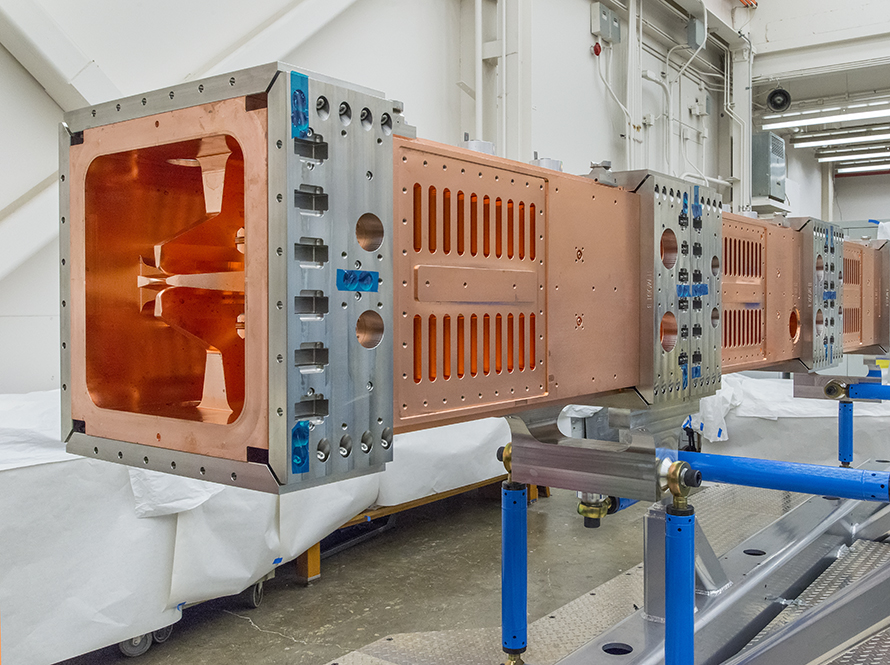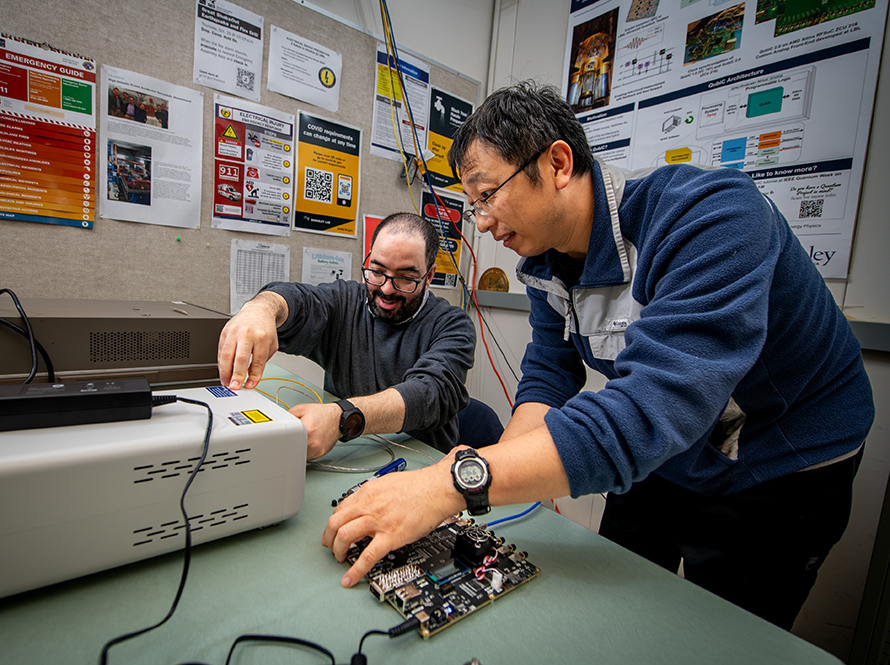Precision instrumentation and control systems allow us to explore what a beam is doing inside a particle accelerator and to manipulate it. ATAP’s BACI Program focuses on three areas of these essential systems that offer important opportunities to serve the accelerator community and advance the state of the art.
Exciting ongoing prospects include LCLS-II and LCLS-II-HE projects at SLAC, the PIP-II project at Fermilab, the Electron-Ion Collider, a muon collider, and the next generation of our Advanced Photoelectron Experiment. We look forward to building on our successes to serve the needs of the accelerators of tomorrow.

Radiofrequency (RF) design for accelerating, manipulating, and controlling beams is a longtime area of strength for BACI — going back to the very origins of the Program, Division, and Laboratory — that integrates accelerator physics and engineering. Over the past three decades we have developed a number of demanding ion-accelerator “front ends,” most recently radiofrequency-quadrupole linacs for IMP-Lanzhou and Fermilab’s PIP-II project.

Quantum computing has game-changing potential in many areas of computation. BACI researchers have leveraged the investment in accelerator controls to develop an open-source, FPGA-based quantum bit control system called QubiC, designed to demonstrate the functionality and scalability of superconducting quantum processors.

We have developed expertise in “low-level RF” controls that stabilize the electromagnetic fields in state-of-the-art accelerator systems; stabilizing mode-locked laser oscillators; and a femtoseconds-across-kilometers timing and synchronization. Together with collaborators at Berkeley Lab and other institutions, we are also working on a highly promising approach to high-average-power, high-repetition-rate lasers for laser-plasma accelerators and other applications.

Originating as an R&D testbed for the injectors of next generation light sources such as LCLS-II, our Advanced Photoinjector EXperiment has become a user-science instrument in its own right by supporting HiRES, the High Repetition-rate Electron Scattering apparatus for ultrafast electron diffraction. HiRES is also a vital platform to test innovative accelerator instrumentation.

BACI, together with the Engineering Division, contributes RF controls and advanced accelerator instrumentation to the ongoing enhancements of the Advanced Light Source as well as its major upgrade project, ALS-U, and we are following up on our LCLS-II success with LCLS-II HE. It is an area in which we strive to be the partner of choice for the most challenging projects across the DOE complex.
